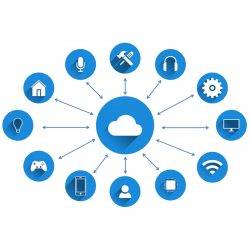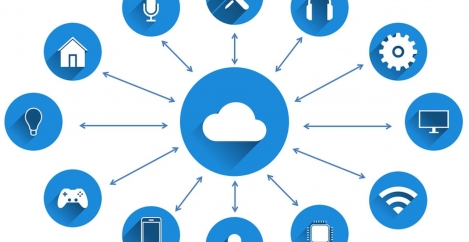May 14, 2018
Artificial intelligence, robots and automation set to transform the office environment
 In today’s highly digital landscape, tools like AI and machine learning were developed to significantly improve productivity in the workplace. But despite their existence, many companies still trail behind in terms of integrating AI in their office environments. In fact, an article on Workplace Insight previously noted that over a quarter of employers fail to provide staff with digital and flexible tools. Though it is predicted that the next couple of years will see businesses adapt to a human-and-machine environment, organisations still have a lot of catching up to do in terms of digital basics.
In today’s highly digital landscape, tools like AI and machine learning were developed to significantly improve productivity in the workplace. But despite their existence, many companies still trail behind in terms of integrating AI in their office environments. In fact, an article on Workplace Insight previously noted that over a quarter of employers fail to provide staff with digital and flexible tools. Though it is predicted that the next couple of years will see businesses adapt to a human-and-machine environment, organisations still have a lot of catching up to do in terms of digital basics.
So, what exactly are the advantages of incorporating automation tools? Firstly, they reduce the manual effort to complete mundane tasks. For example, with software that can track computer activity and pull data from emails and calendars, workers are spared from the tedious process of manually filling up timesheets. There are also programs that may be used to replace traditional landlines through a cloud-based phone system that integrates chat bots, contact information, and machine learning. Using only one tool, each worker can access their own voicemails, as well as listen to recorded calls. In addition, integrating AI reduces human error, which often affect productivity or end in increased company costs. These tools can provide more accurate data, allowing employees to gain better business insights which increases their efficiency.
In addition, AI can support the hiring process, too. There is software that has been developed to help recruiters seek out better job candidates. They usually do this by analysing information fed by recruiters, then using predictive models to search for talent that fit the job specs. They are also able to seek out passive job seekers, who are sometimes more competent candidates than ones who are actively looking. Automation tools can speed up the interview process as well, and determine which candidates are viable.
AI integration might even start from suppliers, as long-time tech brands are adding AI capabilities to their products. Microsoft’s Office suite has offered cloud-based AI for years now, and a report on Engadget recently found that the tech firm had recently added more AI tech, such as machine learning that can create trend charts based on data. Microsoft Office programs like Excel and Word are integral in most office workflows, hence the additions. This goes for search engines as well, which are stepping up their AI tech. Ayima reported that Bing’s new AI update provides search results with different perspectives. For example, if someone searches for information on the effects of coffee, Bing will collate sites that explain both its pros and cons. Using search engines is essential for researchers, analysts, and any worker who relies on the Internet for projects, so an update like this may prove invaluable.
With advanced tech taking over certain jobs, it begs the question of whether AI will leave many people unemployed. Experts believe there are more advantages to having AI tech around. Flybits CEO Dr. Hossein Rahnama thinks that AI won’t replace workers, rather it will create a knowledge-based economy which people can leverage to improve automation. It essentially means people will learn to work alongside AI. It could also potentially create new jobs where people will streamline human and AI workflows together, albeit all of this will take time for workers to adapt. Companies must first be willing to change before a future where people and robotics work together can be realised.
To steer growth, employers should study these AI trends and introduce them to the workplace for improved efficiency. Investing in AI helps secure the future of companies, as it pays to stay on top of new technologies.













